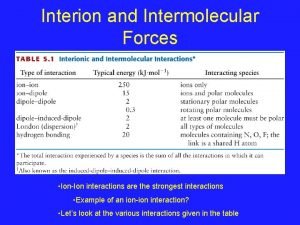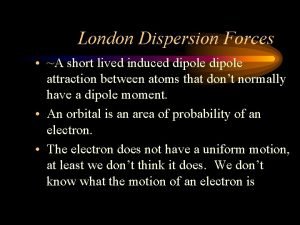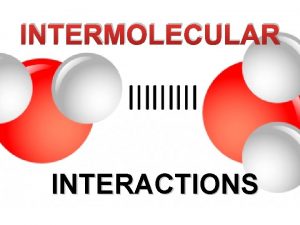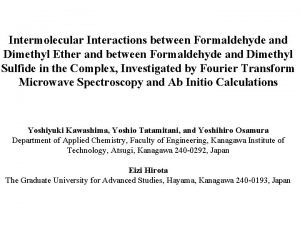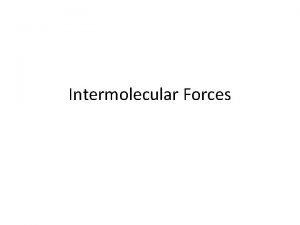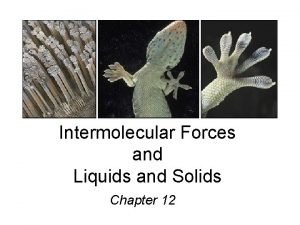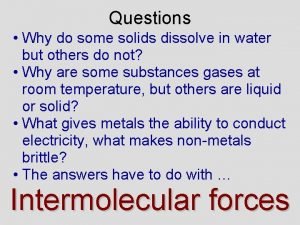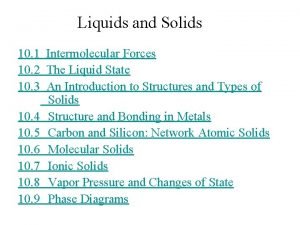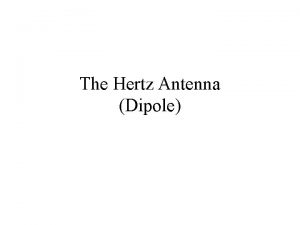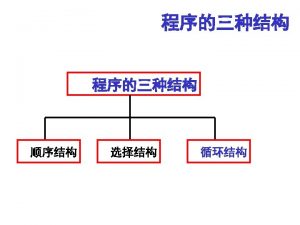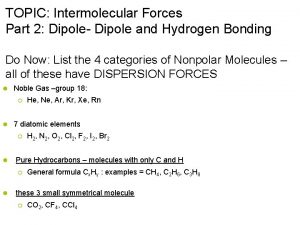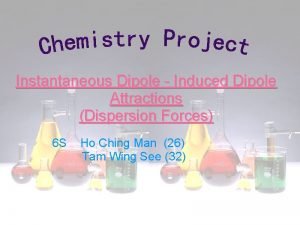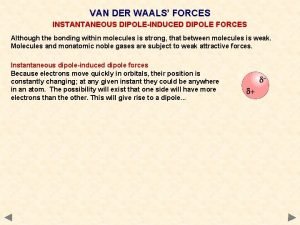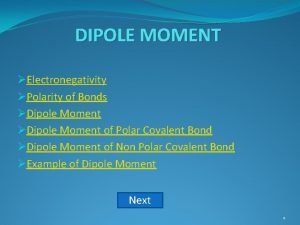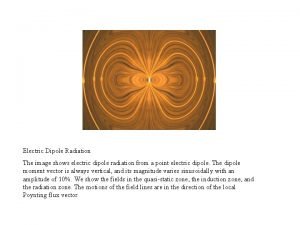Dipole Forces Main Concept Dipole forces result from










- Slides: 10

Dipole Forces Main Concept: Dipole forces result from the attraction among the positive ends and negative ends of polar molecules. Hydrogen bonding is a strong type of dipole-dipole force that exists when very electronegative atoms (N, O, and F) are involved.

Dipole Forces Dipoles Definition Causes Polar vs. Nonpolar Interactions Types of Dipoles Hydrogen Bonding Dipole-Dipole-Induced Dipole Definition Causes

- Dipole: an atom or molecule which has slight negative and positive ends caused by an uneven distribution of electrons - Electronegativity differences are responsible for uneven distributions of electrons between atoms

vs - Molecules with dipole moments experience Coulombic interactions resulting in net attractive interaction when near each other – Intermolecular dipole-dipole forces are weaker than ionic forces/covalent bonds – Interactions between polar molecules are typically greater than between nonpolar molecules of comparable size because interactions act in addition to London dispersion forces

(from previous) – Dipole-dipole attractions represented by diagrams showing positive and negative ends of polar molecules maximizing attractions and minimizing repulsions as a liquid or solid – Dipole-induced dipole interactions between polar and nonpolar molecules; strength of these forces increases with magnitude of dipole of polar molecule and with polarizability of nonpolar molecule

Question: Order the following in terms of which would have a greater magnitude of dipole and explain why you think this. HF vs H 2 O vs NH 3

- Hydrogen bonding a relatively strong type of intermolecular interaction - Between hydrogen atoms covalently bonded to highly electronegative atoms (N, O, and F) attracted to negative ends of a dipole formed by electronegative atoms (N, O, and F) in a different molecule, or different part of same molecule - When hydrogen bonding is present, small molecules may have strong intermolecular attractions


- Representations of hydrogen bonding b/w molecules, or b/w different parts of single molecule (DNA, proteins), show diagrams of molecules with hydrogen bonding and location of hydrogen bonds

- Ionic interactions with dipoles are important in solubility of ionic compounds in polar solvents
 Ion-dipole interaction example
Ion-dipole interaction example Dispersion forces vs dipole dipole
Dispersion forces vs dipole dipole Chem ufl
Chem ufl Dispersion forces vs dipole dipole
Dispersion forces vs dipole dipole Dipole induced dipole forces examples
Dipole induced dipole forces examples Dimethyl ether intermolecular forces
Dimethyl ether intermolecular forces Vander waals force
Vander waals force Liquid properties
Liquid properties Dipole dipole interaction example
Dipole dipole interaction example Closest packed structures
Closest packed structures Strength of intermolecular forces
Strength of intermolecular forces
